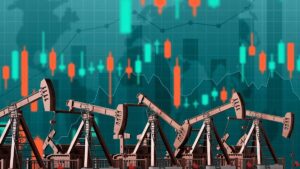The great ASX rebalancing act, and how it can impact share prices

Getty images
- ASX rebalancing vital for analysts, fund managers and investors
- The S&P/ASX 300 a significant index to track
- ETF managers tell why a rebalance can make or break a stock
From our Lunch Wrap to Closing Bell articles, Stockhead (like much of the financial media) will track indices — a keen indication of the financial health of a market or sector.
Whether it’s the S&P/ASX 200, S&P/ASX 50, S&P/ASX300 or ASX Emerging Companies (XEC), indices are a vital component to decision making for analysts, fund managers and investors.
The S&P 500 tracks performance of the 500 largest companies listed on US stock exchanges, indicative of overall health of the world’s largest economy.
The Shanghai SE Composite and CSI 300 are the main indices for China, the world’s second largest economy.
But have you ever wondered about ASX rebalancing along with global indices and what are the implications? Should we all be paying more attention to the great rebalancing act?
The S&P ASX 200
The Australian market benchmark is the ASX 200, which is market-cap weighted and float-adjusted.
Market-cap weighted means stocks are included in the Index based on their market cap or overall value of the company. This is determined by shares on issue multiplied by the share price.
Contribution of a stock’s performance to the overall Index performance is weighted based on their market cap.
Performance of larger stocks has a significant impact on the Index.
For example, when BHP amalgamated its UK and Australian listings into one on the ASX in January its weighting went from ~8% to ~12%.
Float-adjusted means the index only counts shares available to investors, and excludes those held by other individuals or companies.
For example, a company may only have a free float of 70% of the market cap with another 30% held off-market by another company or individual.
ASX rebalancing — Tracking indices
Responsibility for ASX indices and ASX rebalancing lies with S&P Dow Jones Indices, part of credit rating agency S&P Global. For other markets, responsibility falls on various major credit rating agencies, with the main MSCI.
VanEck deputy head of Investments and Capital Markets Jamie Hannah told Stockhead it is worth noting MSCI Index rebalances are the last business day in May and November.
He said these days can see significantly increased turnover on exchanges and can impact investors.
“They are for the same reason as the S&P but are just on different dates and reflect different indices – that is, the main global indices,” Hannah said.
“MSCI are the benchmark index for many major global funds so consider them the global equivalent of what S&P does in Australia.”
Breakdown of Australian indices
The list of indices tracking performance of ASX-listed companies across various sizes and industries is long but certainly worth familiarising yourself.
- S&P/ASX 20: Measures performance of 20 actively traded and highly liquid securities that are among the largest listed on the ASX by float-adjusted market cap
- S&P/ASX 50: Measures performance of 50 of the largest and most liquid index-eligible stocks listed on the ASX by float-adjusted market cap
- S&P/ASX 100: Measures performance of the 100 largest stocks listed on the ASX by float-adjusted market cap, representing both the large and mid-cap components of the S&P/ASX index family
- S&P/ASX 200: Measures performance of the 200 largest and most liquid stocks listed on the ASX by float-adjusted market cap
- S&P/ASX 300: Measures performance of 300 of the largest, highly liquid securities listed on the ASX by float-adjusted market cap, including large, mid, and small cap components of the S&P/ASX index family
- S&P/ASX Mid Cap 50: Measures performance of the mid cap component of the S&P/ASX 100, excluding the large cap component
- S&P/ASX Small Ordinaries: Measures performance of companies included in the S&P/ASX 300, but not in the S&P/ASX 100
- S&P/ASX Small Ordinaries Select: Measures performance of SmallCap companies with positive earnings within the S&P/ASX Small Ordinaries
- S&P/ASX Mid-Small: Measures performance of companies included in the S&P/ASX 300, but not in the S&P/ASX 50 – a combination of the S&P/ASX Mid cap 50 and S&P/ASX Small Ordinaries indices
- S&P/ASX All Australian 50: Measures performance of 50 of the largest, by float-adjusted market cap, highly liquid ASX-listed securities defined as ‘domestic’ or ‘Australian’ for index purposes and the Australian component of the S&P Global 1200
- S&P/ASX All Australian 200: Measures performance of 200 of the largest, by float-adjusted market cap, highly liquid ASX-listed securities defined as ‘domestic’ or ‘Australian’ for index purposes
- All Ordinaries: Measures performance of the total Australian equity market and is composed of 500 largest securities listed on the ASX, with no liquidity screen or minimum IWF requirement – only member of the S&P/ASX index family not weighted by float-adjusted market cap
GICS Indices
There are also the GICS indices to measure performance of various sectors and industry groups within the Australian equities market, as defined by the Global Industry Classification Standard (GICS).
Among the GICS indices are:
- Industrials and Resources Indices
- S&P/ASX All Technology Index
- S&P/ASX 300 Metals & Mining Index
- S&P/ASX All Ordinaries Gold Index
- S&P/ASX 100 and S&P/ASX 200 Equal Weight Indices.
- S&P/ASX 200 A-REIT Equal Weight Index.
If you want to delve deeper into how companies are included on the GICS indexes and how they are balanced, you can find out more on the S&P Global website.
For further complexity there are also S&P Dow Jones leveraged Indices, designed to generate a multiple of the return of the underlying index in situations where an investor borrows funds to generate index exposure beyond his/her cash position.
Rebalancing indices
Exact methodology for inclusion in certain indexes and rebalancing is quite complex considering a range of factors including market cap and liquidity and can also be found on the S&P Global website.
However, it is worth noting just how often they are rebalanced. While some are done quarterly, others are done semi-annually or annually.
The S&P/ASX 20, S&P/ASX 50, S&P/ASX 100, S&P/ASX 200, S&P/ASX All Australian 50, and S&P/ASX All Australian 200 indices are all rebalanced quarterly.
The rebalancing happens on market close on the third Friday of March, June, September, and December.
“On these days, due to the rebalance, the turnover in terms of dollar value traded on ASX and globally is vastly above normal,” Hannah said.
“If a company is coming in or out of the ASX 200, it will affect the share price.”
The market is informed of the upcoming changes one week in advance, or two weeks in the case of the September change.
The AXS 300 is re-balanced semi-annually, effective after the market close on the third Friday of March and September.
The All ordinaries is re-balanced only once annually in the March quarter, which means a significant number of additions and removals.
Winds of change
The indices change and evolve as do companies change and evolve. Companies that grow can find themselves added to indices, while ones which shrink removed.
Hannah said if companies are added to an index or multiple ones it presents a range of opportunities and if removed the repercussions can be significant. Companies can find themselves added or removed from ETFs and funds tracking indices.
“Rebalances present massive liquidity events in markets, as all ETF providers are looking to trade their portfolio to match the updated indices,” he said.
He said ETF providers will aim to trade the changes on the close of the rebalance day.
“However, if the position to be traded is so large that it cannot it be filled on the actual re-balance day, then the fund manager will be required to trade over multiple days,” he said.
“The implication is that if a share is coming in or out of an index, it might see sustained buying or selling pressure which can impact the share price.”
The all important S&P/ASX 300 index
TheS&P/ASX 300 is a significant index. It is one that many fund managers or investors use as a cutoff for investments. Entering the S&P/ASX 300 can be a major milestone for companies, signifying they have actually entered the big league.
The Vanguard Australian Shares Index (ASX:VAS) seeks to replicate the index.
Vanguard Asia Pacific chief investment officer Duncan Burns told Stockhead full replication is the purest form of indexing, where an index manager holds all the securities in the portfolio at or close to their index weight.
“For instance, at the recent balance on March 18 VAS, Vanguard’s $28bn flagship Australian shares fund/ETF fund held all 301 (yes, 301 that occasionally happens) lines of the ASX 300 benchmark at or very close to benchmark weight, give or take 0.01% to 0.02% at the security level,” Burns said.
“So starting at the top of the ASX, you have the major banks and miners with a market cap of hundreds of billions, all the way down to the last few securities of the 300, with a market cap of around one billion.
“As a result, VAS contains all 300 securities (or 301 securities for accuracy as at March 18) in percentages according to their market cap.”
Economics 101 – Supply and demand
Share markets are a function of supply and demand for available shares. If demand increases for a particular stock the price will go higher, but if it reduces then the price will go lower. If a stock gets listed in a particular index then this can increase demand.
Burns said the concept of indexing is generally simple to understand, which is great for investors but not at all simple to execute.
“It requires significant resources to produce benchmark performance consistently and efficiently,” he said.
“Imagine trying to recreate VAS on your own, buying every single security and trying to figure how much of each security you need, to replicate that index.
“But a successful index manager will produce a portfolio with performance that replicates that of the benchmark index while minimising the additional costs that produce tracking errors.
He said managing changes when companies move in and out of a specific index, without adversely impacting portfolio performance takes considerable skill and the best managers put a great deal of effort into trading disciplines to avoid rebalance costs.
“From Vanguard’s perspective, as a provider of predominantly index funds, managing the ever-changing weightings of securities within indices and markets are a daily occurrence,” he said.
“The beauty of buying an index fund that tracks the ASX 300 is not only the diversification that most index fund investors seek, it is also that all this rebalancing gets done for you regularly, typically at low cost.”
A ball invitation
Simply being on an index can boost a company’s share price.
Just like getting invited to a ball hosted by Queen Charlotte in Netflix favourite Bridgerton, exposure can in itself elevate status and further grow the wealth of a company.
For listed stocks, that means the equivalent of putting on your best attire, polishing your manners and doing your very best for an invite to the ball of the season (in this case, the ASX 300).
Investors should be sure to pay attention to who is getting an invitation.
Related Topics
UNLOCK INSIGHTS
Discover the untold stories of emerging ASX stocks.
Daily news and expert analysis, it's free to subscribe.
By proceeding, you confirm you understand that we handle personal information in accordance with our Privacy Policy.








